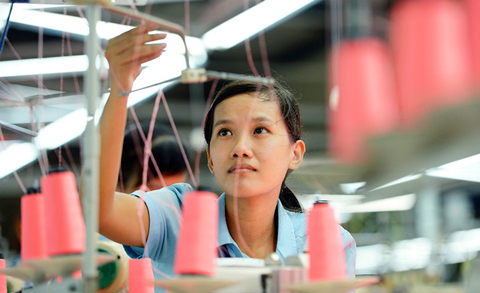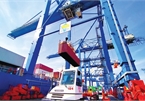
Viet Nam should focus on a productivity-driven development model to become a high-income economy by 2045, according to the latest report from the World Bank (WB).— Photo ILO
Viet Nam should focus on a productivity-driven development model to become a high-income economy by 2045, according to the latest report from the World Bank (WB).
The international financial institution launched the 'Vibrant Viet Nam: Forging the foundation of a high-income economy' report yesterday in Ha Noi, urging the country to combine innovation with balanced development and allocation of private, public, human and natural capital to become a richer country.
As the Vietnamese Government is preparing its socio-economic development strategy for 2021-30 and a socio-economic development plan for 2021-25, the report recommends policy options to help it maintain the quality growth through more dynamic firms, more efficient infrastructure, skills, and a move toward a greener economy.
“Viet Nam is one of the greatest development success stories of our time. The country, however, is now at a turning point where some of its traditional drivers of growth are gradually weakening,” said Ousmane Dione, country director of the WB.
“To achieve its ambition to become a high-income economy by 2045, Viet Nam must put productivity growth front and centre of its economic model. In other words, it needs to grow not only faster but also better," he added.
Robyn Mudie, Australian Ambassador to Viet Nam, also attended the launch and praised the country's development.
“Viet Nam’s commitment to bold economic reform has been a major contributor to its remarkable economic success,” she said, adding “Australia is proud to have supported this report, which provides clear recommendations on how Viet Nam can harness productivity-enhancing reforms to improve both the quality and equity of its future economic development”.
According to the report, some of the forces that have propelled Viet Nam’s growth were now slowing. The country’s demographic dividend was fading, and global trade was declining, while other challenges - such as pollution and the rise of automation, were growing.
Besides, the ongoing COVID-19 crisis could be an accelerator of these trends, said the report.
To cope with such a changing environment, Viet Nam needed to strengthen its productive assets, with priority given to building dynamic firms by encouraging competition and easing procedures for those firms’ entry and exit.
“Dynamic firms can only be created in a supportive business environment that ensures access to finance, transparent regulations and legal protections,” read the report.
The report also mentioned efficient and sustainable infrastructure including financing, and operations and maintenance as well as skilled workers and fair opportunities.
“The country scores well on basic education, but it will need to promote university and vocational-technical skills that are becoming even more important for a productivity-led growth model,” the report said,
It also put the green economy as one of the key points to develop Viet Nam, mentioning sustainable development required more effective management of renewable natural resources such as land, forest and water; stricter pollution controls, including in major urban centres; and mitigation of and adaptation to the inevitable growing impacts of climate change.— VNS

Revised Vietnam's GDP goals to buttress growth
The aftermath of the health crisis has prompted Vietnam to consider adjusting its economic growth target,

Weak growth outlook to spur further monetary easing in Vietnam: Fitch Solutions
Given the weak economic outlook in Vietnam, Fitch Solutions expects further easing measures to be applied over the rest of 2020 as the country is still targeting real gross domestic product (GDP) growth above 5%.
 Vietnam should focus on a productivity-driven development model to become a high-income economy by 2045, according to the latest report from the...
Vietnam should focus on a productivity-driven development model to become a high-income economy by 2045, according to the latest report from the...